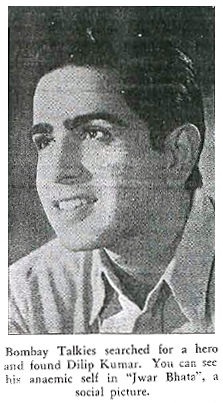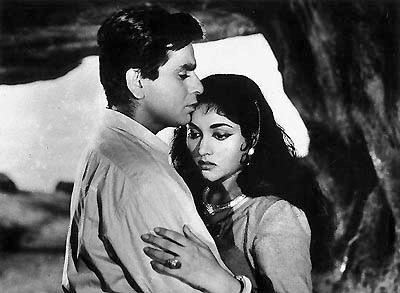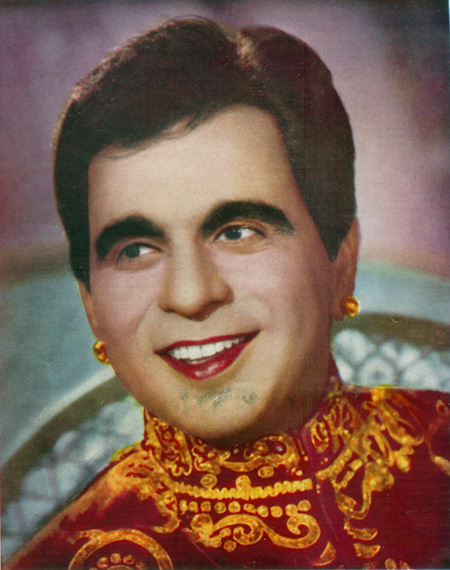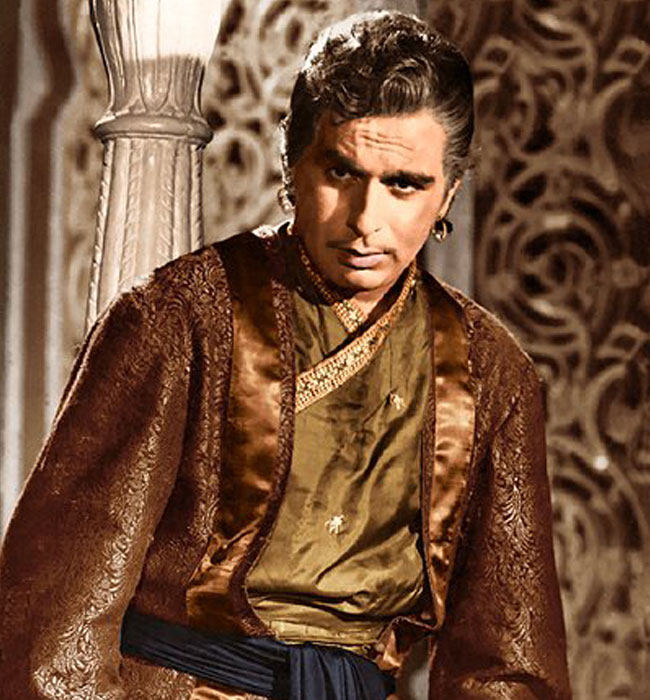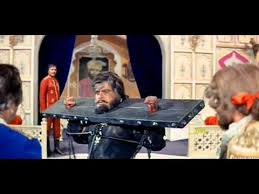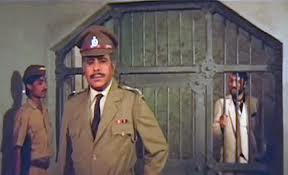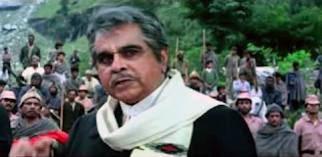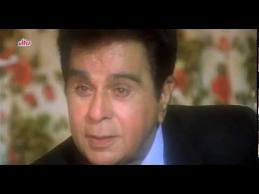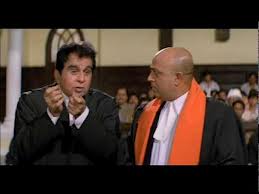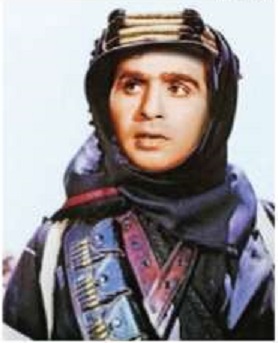Dilip Kumar: his films, their box office performance, awards, career
(→Iconic roles that Kumar refused) |
(→Dilip of Arabia?) |
||
| Line 360: | Line 360: | ||
"In your own bazaar you enjoy a certain status. What's the point of venturing out into fields unknown where you have no say? No contact with the subject matter." | "In your own bazaar you enjoy a certain status. What's the point of venturing out into fields unknown where you have no say? No contact with the subject matter." | ||
==Dilip of Arabia?== | ==Dilip of Arabia?== | ||
| − | [[File: Dilip of Arabia.jpg| A '' | + | [[File: Dilip of Arabia.jpg| A ''Times of India '' artist’s vision of what Dilip Kumar would have looked like had he actually played Sherif Ali in ''Lawrence of Arabia''. |frame|500px]] |
[http://epaperbeta.timesofindia.com/Article.aspx?eid=31808&articlexml=DILIP-OF-ARABIA-19072015015010 Anvar Alikhan, ''The Times of India''] | [http://epaperbeta.timesofindia.com/Article.aspx?eid=31808&articlexml=DILIP-OF-ARABIA-19072015015010 Anvar Alikhan, ''The Times of India''] | ||
Revision as of 21:44, 5 September 2015
This article is under construction: and you can help The portions originally meant for this article have been shifted to Madhubala, actress If you wish to contribute photographs and/ or biographical details about Dilip Kumar (or any other subject), please email them to parvezdewan(a)yahoo.com |
Contents |
The sources of this article include
i) The real superstars of Bollywood - Dilip Kumar Jagran Junction 30 Aug, 2011
ii) Nasir’s Eclectic Blog Tuesday, December 1, 2009
iii) Nasir’s Eclectic Blog Tuesday, December 1, 2009
iv) Excerpted from `Dilip Kumar: The Substance and the Shadow' with permissions [obtained by The Times of India] from Hay House India and Penguin Books India The Times of India Jun 01 2014
'Masti Maalgadi'/ Jagran Junction writes:
If Big B Amitabh Bachchan is considered the superstar of Hindi films of the last quarter of the 20th century, this superstar of the Hindi films of the 1950s and 60s was Dilip Kumar.
Profile

Dilip Kumar was born on December 11, 1922 in the city of Peshawar in present-day Pakistan. His childhood name was Mohammad Yousuf Khan (Muhammad Yusuf Khan). His father, Lala Ghulam Sarwar's (Lala Ghulam Sarwar) used to sell fruit to feed his family.
Early life
His family migrated to Bombay during the Partition of India. He passed his early life in misery. The losses in the trade of his father made Dilip begin to work in a canteen in Pune. That was where Devika Rani first sighted him, and it was from there that she made an actor of Dilip Kumar. Dilip Kumar was the new name that he assumed.
Bhojpuri As a youngster, he spent many years in the hill town of Deolali in Maharashtra. Once, squatting in the kitchen of their gardener he heard a dialect of Hindi which, he says, fascinated him. This was actually Bhojpuri, though he didn't know that at the time. "It sounded fascinating and there was a vivid expressiveness about it while conveying raw emotions," he recalls. His Gunga Jumna is noted for its authentic use of Bhojpuri and the actor says the film came from his long ambition to work the magic of the dialect into a story on screen.
At the age of twenty-five years Dilip Kumar had become the country's number one actor.
Filmography
As an actor...
...with the box office rank of each film
1944 Dilip Kumar’s career got off to a good start with his debut film doing fairly well at the box office.
1944 Jwar Bhata No. 6. Not at all bad for a debut film. Quite good, in fact.
1945 An average year for him.
1945 Pratima Not in the Top 7.
1946 No Dilip Kumar film was released.
1947 Dilip Kumar has a success and a good year overall.
1947 Jugnu No. 1 (BoxOfficeIndia.com) or no. 5 (IbosNetwork.com). Either way, it was DILIP KUMAR’s first major hit. He had arrived with his very third film.
1947 Nauka dubi Not in the Top 6, but the film had an impact on audiences
1948 probably was the year in which Dilip Kumar drew close to superstardom. He starred in the no.1 hit, which stirred the nation, and had another two films in the Top 6.
1948 Shaheed was no.1 on some charts (and Raj Kapoor’s Aag on others)
1948 Mela No. 4
1948 Nadiya Ke Paar No. 6
1948 Anokha Pyar
1948 Ghar Ki Izzat
1949 was another year in which Dilip Kumar and Raj Kapoor shared the no.1 slot: this time in the same film.
1949 Andaz No.1
1949 Shabnam No.5
1950 Three films in the Top 9.
1950 Babul No. 2 or 4.
1950 Jogan No. 4 or 5.
1950 Arzoo No.9
1951
1951 Deedar No. 4
1951 Tarana No.7
1951 Hulchul
1952
1952 Aan No.1 There is debate about the year in which Aan was released. 1952 is the most likely year.
1952 Daag No.4
1952 Sangdil no.5
1953
1953 Foot Path No.5
1953 Shikast No.7
1954
1954 Amar No.9
1955
1955 Azaad No.2
1955 Devdas No.4, but one of the most influential Hindi-Urdu films of all times. till at least the 1980s every time Devdas was re-released it would do reasonably well at the box office, a distinction that only one other Dilip Kumar could claim: Mughal e Azam.
1955 Insaniyat No.6
1955 Uran Khatola No.10
1956 No Dilip Kumar release
1957
1957 Naya Daur No.2 (behind the unbeatable Mother India)
1957 Musafir No.10
1958
1958 Madhumati No.1
1958 Yahudi No.3
1959
1959 Paigham No.2
1960
1960 Mughal-e-Azam No.1: adjusted for population and inflation, by some calculations, the biggest hit in the history of Hindi-Urdu cinema
1960 Kohinoor No.3
1961
1961 Gunga Jumna No.1
1962 and 1963 No Dilip Kumar release. With hindsight, his bad period had begun.
1964
1964 Leader No. 11 or 15. The first major flop of DILIP KUMAR’s career
1965 No Dilip Kumar release
1966
1966 Dil Diya Dard Liya No. 13. DILIP KUMAR’s second major flop
1967 Dilip Kumar had not had a hit in six years. 1967 gave him a brief respite.
1967 Ram aur Shyam No.2 or 4
1968
1968 Aadmi No.7 At the time it was seen as a flop. However, ultimately, the film did average business.
1968 Sunghursh No. 12 or 18. A highly regarded film that did badly at the box office.
1968 Sadhu aur Shaitaan No.13 or 21. Cameo.
1969-72 There were no Dilip Kumar releases.
1973 Gopi No.12. Not a hit. However, give DILIP KUMAR’s lately lowered box office standing, its earnings were above average.
1971: There was no Dilip Kumar release.
1972 Dilip Kumar fans got to see their idol in a lead role again—two in fact.
1972 Dastaan No.20. Despite DILIP KUMAR’s double role this remake of Afsana did not do well.
1972 Anokha Milan (Guest appearance) Not in the Top 22.
1972 Koshish Cameo. Not in the Top 22.
1974 Dilip Kumar was back in the romantic lead (opposite his real life wife, the beautiful Saira Banu, 22 years his junior) in Sagina. It was a sincere film about the working class but the Hindi-Urdu version did not do well at the box office.
1974 Sagina No.18.
1974 Naya Din Nai Raat Voice only. Not in the Top 23.
1974 Phir Kab Milogi Cameo. Not in the Top 23.
1975 No Dilip Kumar film was released.
1976 At age 54 Dilip Kumar played his last role in the romantic lead. It was a triple role and his leading ladies included not only Saira Banu but also the twenty-something Leena Chandravarkar. The film did average business.
1976 Bairaag No.16.
1977-1980 No Dilip Kumar film was released.
1981 Manoj Kumar, north India’s best-known actor director of patriotic films had never made a secret of his adulation of his childhood hero, the patriotic Dilip Kumar of Shaheed. It was he who gave the 59-year-old Dilip Kumar his second coming and top billing in the 70mm period opus Kranti. It was a mature role but one of the causes of the film’s success.
1981 Kranti No. 1 or 2 film of the year (rivalled only by Naseeb).
1982 There was a huge demand among Hindi-Urdu audiences for a histrionic clash between the reigning no.1 Amitabh Bachchan and the greatest living actor of commercial Hindi-Urdu cinema. Shakti, in which they played son and father, did well but was not the superhit that it was expected to be because the script was not the world’s best.
Vidhaata, on the other hand, gave Dilip Kumar the kind of role his fans wanted to see him in. he was the head of a middle-order starcast, had the title role and drove the film to the top of the charts.
1982 Vidhaata No.1 or no.4.
1982 Shakti No.3 or 8.
1983 Though Dilip Kumar played a mature role in Mazdoor, he was the focus of the film, which did not do well.
1983 Mazdoor No. 23.
1984 saw Dilip Kumar in two author-backed roles, both written by Javed Akhtar. Mashaal was the strongest script that he had written after his split with Salim. It has acquired a cult status and its Ai bhai scene affectionately lampooned even in the second decade of the 21st century. Once again Dilip Kumar played no one’s father but an idealist who is driven to crime.
While Duniya did below average business, but Mashaal was a washout at the box office.
1984 Duniya No.17.
1984 Mashaal No.30
1985 No Dilip Kumar release.
1986 Dilip Kumar was back at the top in a 70mm opus with a tailor-made role as a brave and incorruptible police officer. Dharm Adhikari had him in the title role of an honest justice of the law. However, the film was a non-starter at the box office.
1986 Karma No. 1 or 2 (tying with the formidable Aakhree Raasta)
1986 Dharm Adhikari Not in the Top 42.
1987-88 No Dilip Kumar film was released.
1989
1989 Kanoon Apna Apna No.21. Below average.
1990
1990 Izzatdaar No.18. Below average.
1990 Aag Ka Dariya Not in the Top 50. A non-starter.
1991 Once again Dilip Kumar was back in the top rungs in an author-backed role in a film in which the young romantic couple was a mere decoration and the focus was on Dilip Kumar and veteran Raaj Kumar. Saudagar was Dilip Kumar’s last hit.
1991 Saudagar No.3
1992-97 Despite Saudagar’s success Dilip Kumar did not star in another film for the next six years.
1998 saw the swansong of one of the greatest actors and superstars of Hindi-Urdu cinema
1998 Qila was a washout. It was not in the Top 50.
As a writer
1961 Gunga Jumna
1964 Leader
As a producer
1961 Gunga Jumna
Career
1942-47
Dilip Kumar began his film career with the film Jwâr Bhâtâ ("Tides"); however, the film was not successful. His first hit was "Fireflies" ( Jugnu ). The film was released in 1947 and placed Dilip Kumar in the category of Filmistan’s successful film-stars.
In 1942, Yusuf Khan (Dilip Kumar) was in jail overnight, he refused to have his breakfast of eggs, toast and tea that was offered to him the next morning because that day Mahatma Gandhi was on n fast. The nation was busy with the Quit India Movement of 1942, for driving out the British Raj. During the next two years life was to take unexpected turn for Yusuf Khan when Devika Rani, the lady boss of Bombay Talkies, offered him a contract to act in her films.
After initial hiccups Yusuf Khan accepted the offer and thus landed a role in Jwar Bhata (1944) under the name that the First Lady of the Indian Screen selected for him – Dilip Kumar - the name that was to cast spell on generations of film goers and fraternity for the next six decades. Thus he made his debut as an actor opposite Mridula and Shamim under the direction of Amiya Chakarborty. Dilip Kumar did two more films, Pratima (1945) and Milan (1946) after Jwar Bhata.
1947-53
In 1949, Dilip Kumar and Raj Kapoor, the other rising superstar of the era, worked together with for the first time in the film Andâz . The film was a hit. Serious roles in films such as Deedâr (1951) and Devdas (1955) earned him the title King of Tragedy.
Jugnu (1947), Ghar Ki Izzat, Mela, Shaheed, Anokha Pyaar and Nadiya Ke Paar (all 1948); Shabnam and Andaz (1949); Jogan, Babul and Arzoo (all 1950); Hulchal, Tarana and Deedar in 1951; Aan, Sangdil, and Daag (1952).
Daag which was inspired by the 1950 Marathi movie, Mee Daaru Sodli, won for Dilip Kumar his first Filmfare Award in 1953 for his stellar performance of an alcoholic who having set out to purchase medicines for his dying mother, instead succumbs to his temptation and buys liquor for himself, and who finally manages to give up his drinking habits for good. In 1953, Dilip Kumar featured in Shikast and his favourite Foot-Path “where stark reality was mingled with thought-provoking romanticism.”
1954-59
Around 1954, Bimal Roy was busy shooting with Dilip Kumar his prestigious Devdas which was based on the Bengali novel of Sharatchandra Chattopadhyay.
In 1954, Mehboob Khan released his Amar, starring Dilip Kumar, Madhubala and Nimmi. From 1955 till 1959 Dilip Kumar starred in such movies as Devdas and Udan Khatola, (1955); Insaniyat, and Azaad (1956); Naya Daur and Musafir (1957), Madhumati and Yahudi (both Bimal Roy’s – 1958). During these years, Dilip Kumar won the Filmfare Best Actor Awards for his roles in Devdas, Azaad and Naya Daur! He also got the nomination for the said Award in Madhumati. Dilip Kumar did Paigham (1959) along with Raj Kumar, Vyjayantimala and B. Saroja Devi. He was cited for the Filmfare Best Actor Award nomination.
1960-69
Dilip Kumar, in 1960 he had two releases: Kohinoor and Mughal-e-Azam. He again won the Filmfare Best Actor Award for Kohinoor.
In the all-time blockbuster Mughal-e-Azam (1960), he played the role of the Mughal prince Jahangir.
In 1961 he wrote and produced and acted in Ganga Jamuna which was a trend-setting movie in many respect. This mile-stone of a movie elicited a very powerful performance from Dilip Kumar.
Sophia Loren, the two times Oscar Winner, was influenced profoundly by his acting. Astonishingly, Dilip Kumar did not win the Filmfare Award. He was of course nominated under that category.
After a three-year hiatus, Dilip Kumar accepted the role of Leader (1964) for Sashadhar Mukherjee. He also wrote the film-story which is as relevant today as it was then. His comedy role fetched him another Filmfare Award in the Best Actor Category.
His second coming
Dilip Kumar played a double role in Ram aur Shyam. The film was a superhit after a lean period that saw Leader and Dil diya dard liya flop.
His movies in the second half of the Sixties are: Dil Diya Dard Liya (1966); Ram Aur Shyam (1967), Sungharsh, and Aadmi (both 1968).
He was nominated in the Best Actor Category in all the four films. In Ram Aur Shyam Dilip Kumar played the full-fledged double role for the first time and his impact in the movie was such that it won many acclaims, including the prestigious Filmfare Award for his diverse, sensitive and powerful performance. His adverse critics, who thought he was finished, were deservingly dealt a serious blow.
However, his next few films, notably the critically acclaimed Sunghursh and Dastân did not do well either.
The 1970s
In Nineteen Seventies we have four Dilip Kumar movies: Gopi (1970), Dastaan (1972), Sagina (1974) and Bairaag (1976). All the three movies, excluding Dastaan, had his better-half, Saira Banu, as his heroine, while B.R. Chopra’s Dastaan which was a remake of Afsaana (1951) had Sharmila Tagore. In the Seventies he also had a guest appearance Phir Kab Milogi (1974) – a Mala Sinha-Biswajeet starrer.
Sagina Mahato (1970) was his diamond-jubilee hit Bengali film which was directed by Tapan Sinha. It created box-office records in Bengal.
Portrayed as a brooding tragic hero, Dilip Kumar was actually quite athletic. In Sagina Mahato, one of his later critically acclaimed films, there is a sequence where the character feeling claustrophobic in an office takes off on a sprint alongside a speeding train. "When I suggested the scene to Tapanda, he liked the idea very much. He looked at me and asked me in his quiet manner if I could wait for a double to be arranged for the run. He stared at me in disbelief when I told him I would do the sprint myself." The shot was done in one take.
Anokha Milan (1972) had Dharmendra along with him.
In Bairaag, Dilip Kumar had triple roles, that of a father and his two sons. Bairaag additionally had the beautiful Leena Chandavarkar also as his heroine. This was the last movie of Dilip Kumar where he was the romantic hero. Thus from 1944 to 1976 he played the roles of a film hero for 32 long years.
The 1980s and ’90s
His third coming
When Dilip Kumar came back to the silver screen after five years in Kranti (1980) it was his second innings but a successful one too. Stories were written by contemplating him in a central role. Thus we have Shakti and Vidhata (1982), Mazdoor (1983), Duniya and Mashal (both 1984), Karma and Dharam Adhikari (Both 1986), and Kanoon Apna Apna (1989), Izzatdaar (1990)) and Saudagar (1991) and Qila (1998). In Shakti Dilip Kumar had Amitabh Bachchan, the super-star of the time, pitted against him. However Dilip Kumar came out with such a brilliant performance that it won him yet another Filmfare Award in the Best Actor category. He was also nominated for the said Award in Mashal and Saudagar.
Ai Bhai! Dilip Kumar's performance in Mashal was again a trend-setter and his AY BHAI....scene has been emulated in many Bollywood movies. In Yash Chopra's Mashaal (1984), there is a heart-wrenching scene in which Dilip Kumar's character is shown standing on a road desperately looking for some help to take his very ill wife (Waheeda Rehman) to a hospital. But she dies in his arms, no vehicle willing to stop on the quiet night street. Dilip Kumar says the scene was a straight replay of his father's panic when his mother had a near fatal asthma attack.
In the 1970s, 1980s and 1990s he worked in relatively few films. However, such was the respect and fan following that he continued to enjoy that most of the films that he acted in in his 60s were major hits: Krânti (1981), Vidhâtâ (1982), Karmâ (1986).
Duniyâ (The world; 1984), Izzatdâr (The respectable one) (1990) and Saudâgar (Merchant) (1991) were big-budget films, if not as successful. His last film was Qilâ ("Castle"/ 1998).
2014: His last film to be released: Aag ka dariya
Dilip Kumar-starrer 1990 film set to hit theatres soon
ANI | Dec 25, 2013
'Aag Ka Dariya,' made in 1990, might finally be released in 2014. It also stars actress Rekha. In thew film he plays a father in search of his missing daughter.
The director of the film, VS Rajender Babu, told BBC that the film did not get released initially because of a financial dispute and the original print of the film was badly damaged in the intervening years.
But in 2013 Babu found a "perfect print" of the film with a distributor in Singapore.
Other unreleased films
Films starring Dilip Kumar that never got exhibited include: Chanakya, Kalinga, Raasta and Shikasta.
Iconic roles that Kumar refused
UpperStall writes:
Dilip Kumar refused Guru Dutt's Pyaasa (1957) feeling that the character of the poet Vijay in the film was just an extension of his role in Devdas. He also turned down 20th Century Fox's offer of The Rains Came and David Lean's offer of the role which ultimately went to Omar Sharif in Lawrence of Arabia (1962) and which made a major Hollywood star out of Omar Sharif. To quote Dilip Kumar,
"In your own bazaar you enjoy a certain status. What's the point of venturing out into fields unknown where you have no say? No contact with the subject matter."
Dilip of Arabia?
Anvar Alikhan, The Times of India
How Omar Sharif owed his Hollywood career to Dilip Kumar
Omar Sharif burned his way into Hol lywood with Lawrence of Arabia. But what most people don't know is that the actor who was originally supposed to play Omar Sharif 's role in the film was Dilip Kumar.
Director David Lean was an Indophile thanks, partly, to the fact that his fourth wife was Leela Welingkar, a legendary Hyderabadi beauty. Lean had recently made The Bridge on the River Kwai, which had won seven Oscars, and he was now looking to make his next great blockbuster.
The question was who to cast as Sherif Ali, a character based on various tribal chieftains who had fought alongside Lawrence. Lean did not want to use a European star; he wanted a more authentic actor. That's when he got in touch with Dilip Kumar, whose work he knew because of his personal experience of India.
A meeting was arranged with Dilip Kumar, where the charming and persuasive Lean pitched the role to him. But Dilip Kumar turned him down, and the role went to Omar Sharif who had originally been cast to play Tafas, Lawrence's desert guide who, ironically, is shot dead by Sherif Ali in his iconic introductory sequence. Thus, what was intended as Omar Sharif 's end in the film, turned out, instead, to be the beginning of a famous Hollywood career.
But the big mystery, of course, is: why did Dilip Kumar turn down a part that any actor would kill for? It seems an inexplicable career decision, especially given the fact that David Lean was at his prime as a director, having won seven Oscars with his last film.
Strangely, Dilip Kumar's autobiography, The Shadow and the Substance, doesn't shed much light on the matter, so one can only speculate. Was it was because he was then busy with his ambitious Ganga Jamuna project? Or be cause he believed his loyalty was to his Indian audiences? Or simply because he found David Lean too domineering a personality and was worried that the chemistry wouldn't work? All that Dilip Kumar has said on the subject is that he thought Omar Sharif had played the role far better than he himself could have.
Whatever the reason, it may well rank as one of the worst career moves in cinema history.Dilip Kumar lost the opportunity to take his talent onto a whole new, international level, right at the prime of his career. A big loss, especially for an actor noted for his ability to take risks, to learn, and evolve with every new role.
One cannot help wonder: What if Dilip Kumar had, indeed, played the part? He was, unquestionably, a better actor than Omar Sharif (although, he might not have quite had Sharif 's homme fatale quality). He would have done a great job of Sherif Ali's role, quite likely even better than Omar Sharif did. He might have thus become one of Lean's pool of chosen talent, like Alec Guinness, Jack Hawkins and Omar Sharif himself, whom the great director called upon to act in his subsequent productions.And then who knows what might have happened? Maybe, for one thing, Lean might have decided to make his critically acclaimed A Passage to India a couple of decades earlier, with Dilip Kumar playing a brilliant Dr Aziz.
But, that apart, Lawrence of Arabia would have opened other Hollywood doors for Dilip Kumar.And those experiences would have, in turn, helped enrich his future Hindi movie roles. He would have thus surely avoided the bad patch he went through in the 1970s, starting with Gopi and Sagina Mahato, which wiped out ten of the best years of his life.But one thing is for sure: Dilip Kumar would not, unlike Omar Sharif, have left Indian cinema and moved to Hollywood; he was too rooted, and modest, a person for that.
While Dilip Kumar did not act in Lawrence of Arabia, there was another Indian actor who did. And that was I S Johar, who played the minor role of Gasim, a Bedouin tribesman who Lawrence finally executes. The role got I S Johar his hour of glory back home in India, and [for] many Indians his two minutes on screen [were an added attraction of the film].
Quality, not quantity
In spite of being the highest paid and most successful star of the 1950s and early ’60s, Dilip Kumar acted in just 54 films. This indicated that he wanted to give only high quality performances.
In the 1950s and ’60s, Filmistan was ruled by a trinity of matinee idols: Dilip Kumar, Raj Kapoor (the most successful director of his time, though his acting was questionable) and Dev Anand.
The women Dilip Kumar really loved
Dilip Kumar fell in love for the first time with renowned actress Kamini Kaushal. It was on the sets of ‘Shaheed’ that their love blossomed. They were planning to marry as well, but Kamini's brother was against the relationship. Since, Kamini was already married to her late sister's husband to look after her child; it was difficult for her also to move out. It is also said, that Kamini’s brother even threatened the actor to break off and move on.
Dilip Kumar was engaged to Madhubala, who was the most celebrated actress of her times. But it is said, the actor’s ego came in between and they both broke up. The story is, Madhubala was not getting permission from her father to shoot at a certain place and Dilip Kumar was approached by the producer to convince her father. He tried, but failed and the actress refused to disobey her father. And when it came to their marriage, Madhubala asked him to apologise to her father, to which Dilipji refused. They broke up because he did not apologise to her father. Madhubala was madly in love with Dilip Kumar and it is said, that she was sad when he got married. Bad luck!!
For quite sometime, Dilip Kumar remained away from love and relationships, after he broke up with Madhubala. It was hard to believe that any of them could move on. But, he did, after he met Saira Banu. When the actor was introduced to Saira Banu, he considered her “too young” to be paired opposite him in the movie. Also, the actress even confessed that she fell in love with his onscreen image since she was 12 years of age. Their fairy-tale romance turned to a successful marriage when Dilip Kumar was 44 and Saira Banu 22 years old.
Dilip Kumar was soon bored and got in a relationship with a Pakistani [No, she was Hyderabadi] lady called Asma. Dilip saab divorced Saira Banu and got married to Asma. But their marriage didn’t last long and they ended up divorcing after two years of marriage. Apparently, Asma was caught cheating on Dilip saab, which he could not tolerate. He later re married Saira Banu, Indiatimes.com writes.
It was after his divorce with Asma that the actor realized his mistake of moving out of his first marriage and went back to Saira Banu. Since then Saira Banu left Bollywood and enjoyed her role as a homemaker and the couple lived happily ever after.
Awards
In 1993, Dilip Kumar was given the Filmfare Award for Lifetime Achievement. The Government of India awarded him the Dadasaheb Phalke Award which is given for cinematic excellence in India. In 1997 the Pakistan Government awarded him the Nishan-e-Imtiaz which left him traumatized though the highest civilian award was also awarded to Morarji Desai much earlier.
The NTR National Award was given to him in 1997. He was also awarded the Phalke Ratna Award in 2007 and the CNN-IBN Indian of the Year Lifetime Achievement Award in 2009, along with hosts of many other awards.
DK’s body of work
Dilip Kumar movies have gone on to become great classics of Indian Cinema. In his early films, Dilip Kumar mirrors the frustration of youth in upholding life’s values and ideals. For him, it was not the case of “Everything is fair in love and war.” For him, being noble was more important than winning love by aggression or deception or crossing the limits of civility. His romantic losses and longings endeared him greatly to his generation and the next who did not want any shades of grey in the roles he played as in Amar (1954) and Qila (1998). His swashbuckling roles in Aan and Azaad sent the message of fighting evil with will and determination, taking pains in strides. When he came on the screen the hearts missed the beat and the entire audience hall lighted up at the very sight of him.
There is something enthralling about him, his mutterings, his pauses, meaningful shifting of eyes, furrowed forehead, gesturing hands, short chuckles, smiling lips, inspiring speeches, tragic monologues, Heathcliffian determination, rustic innocence, romantic disposition, and the face that expresses tragedy of the mind and happiness of the heart.
Love Life
Dilip Kumar was the most eligible bachelor of his time. When he finally tied the knots with Saira Banu he was 44 years old and she just 22 . Despite gloomy predictions and some unexpected happenings, this marriage has remained as one of the most enduring ones in the film industry.
Jagran Junction resumes below:
Dilip Kumar and Madhubala, Dilip Kumar: Bollywood films in more than Dilip Kumar lived in the news for off-screen love affair. Dilip Kumar, Madhubala, the sweethearts of the first name you can think of. Dilip Kumar and Madhubala's love, everyone knows about. The couple in the film world for his great love and war is discussed. Madhubala - Dilip Kumar, with only one of the four films. The Mughal - e - Azam (1960), his last film, which is a love story between two people as to love. Dilip Kumar was the emotional heart of the barmaid. Together - and work together in love and Dilip sir eager to marry him on the family became angry because of this, are not you will not.
Dilip Kumar, Vyjayanthimala and Dilip-kumar: Dilip Kumar, Vyjayanthimala amazing success on - screen and paired with a new round ',' Ganga - Jamuna 'and' Madhumati 'was featured in the hit films. Tragedy King Dilip Kumar as a producer of her first Bollywood film 'Ganga Jamuna' in the opposite Vy signed. Dilip Kumar Vyjayanthimala in the magic of the first film on the life of the mind, and this was the reason that he had a lot of depth to each manufacturer to make him the hero of the film was talking about.
Actor Dilip Kumar Dilip Kumar and Saira Banu, Dilip Kumar, Saira Banu was married to beauty queen in 1966. Dilip Kumar and Saira Banu at the time of the marriage was 22 at the time, Saira Banu and Dilip Saab 44 years old. Today, it is one of the pair of Bollywood's most famous couples.
Awards and recognition
In 2015 Dilip Kumar was awarded the nation's second highest honour, the Padma Vibhushan. Earlier, in 1991 he had been given the nation’s third highest honour the Padma Bhushan.
In 1994 he was given the Dadasaheb Phalke Award, the highest national award for cinema.
in 1980 Dilip Kumar was made the Sheriff of Mumbai, a title in recognition of his eminence.
In 1997, the Government of Pakistan awarded him the(Nishan-e-Imtiaz), Pakistan's highest civilian honor.
Dilip Kumar, the most award-winning Guinness Book of Records, in the name of the file is. A total of eight times during his lifetime, Filmfare Best Actor Award for Dilip Kumar has not yet broken, and this could not be a record.
For the first time in 1953, the film 'stain' was awarded the prize for Best Actor. In addition Azad (1955), Devdas (1956), a new round (1957), Kohinoor (1960), the Leader (1964), and Ram - Black (1967) and power (1982) Filmfare Award for Best Actor was.
In 1993, the Filmfare Lifetime Achievement Award was awarded.
Rajya Sabha
Movies - with Tragedy King Dilip Kumar has also been a member of the Rajya Sabha. Even today, the most important award and Dilip Kumar Bollywood makes its presence felt in the award show. His dedication to his work at the sight of the Bollywood superstar and perfectionist people believe.
